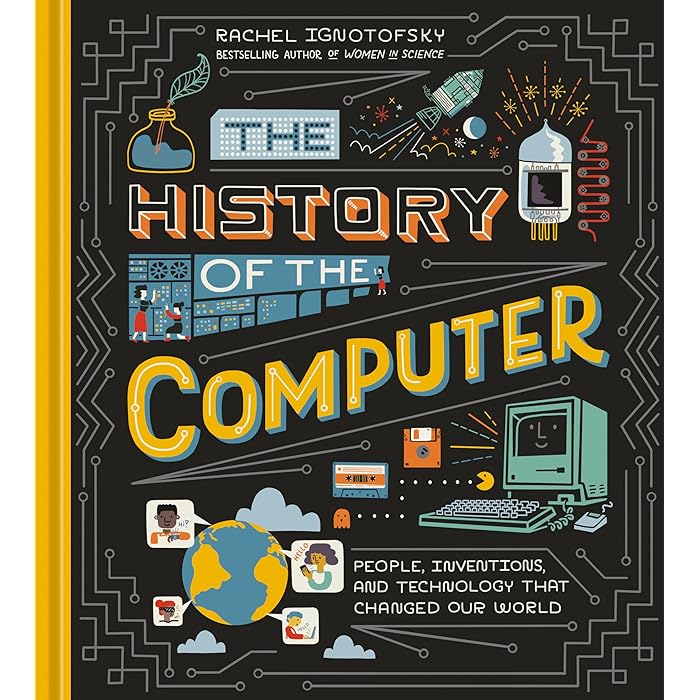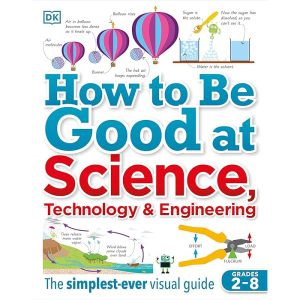Description
The history of the computer spans thousands of years, with significant milestones leading to the powerful devices we use today. Here’s a brief overview of the key developments in the history of computers:
### 1. **Early Calculating Devices (Before 1800s)**
– **Abacus (c. 2400 BCE):** One of the first known computing tools, the abacus, was used by ancient civilizations like the Sumerians, Egyptians, and Greeks for arithmetic calculations.
– **Antikythera Mechanism (c. 100 BCE):** This ancient Greek analog device is often considered an early mechanical computer designed to predict astronomical positions and eclipses.
### 2. **The Mechanical Era (17th – 19th Century)**
– **Blaise Pascal’s Pascaline (1642):** A mechanical calculator invented by French mathematician Blaise Pascal. It could add and subtract numbers using gears and was the first step toward automating arithmetic.
– **Gottfried Wilhelm Leibniz’s Step Reckoner (1694):** Leibniz created a machine that could multiply, which was a major advancement over Pascal’s device.
– **Charles Babbage’s Analytical Engine (1830s):** Often regarded as the first design for a general-purpose computer, Charles Babbage envisioned a machine that could perform any calculation. The Analytical Engine incorporated concepts like a central processing unit (CPU), memory, and punch cards.
– Although it was never completed in Babbage’s lifetime, the Analytical Engine laid the theoretical foundation for modern computers.
– Ada Lovelace, an associate of Babbage, is often credited with writing the first algorithm intended for a machine, making her the first computer programmer.
### 3. **The Electronic Era (1930s – 1940s)**
– **Konrad Zuse’s Z3 (1941):** German engineer Konrad Zuse created the Z3, the first fully programmable digital computer. It was used for calculations related to aircraft design during World War II.
– **Alan Turing’s Universal Turing Machine (1936):** Turing developed the concept of an abstract machine that could simulate any algorithmic computation. The Turing Machine was a theoretical model that played a major role in the development of modern computer science.
– **Colossus (1943):** During WWII, British engineers created the Colossus, the first programmable digital computer, to crack Nazi codes.
– **ENIAC (1945):** The Electronic Numerical Integrator and Computer (ENIAC), developed by John Presper Eckert and John W. Mauchly, was the first general-purpose, fully electronic computer. It used vacuum tubes and could solve complex mathematical problems much faster than any previous machine.
### 4. **The Development of Stored-Program Computers (1940s – 1950s)**
– **EDVAC (1949):** The Electronic Discrete Variable Automatic Computer (EDVAC) was one of the first stored-program computers. It introduced the idea of storing both data and instructions in the same memory, a fundamental concept in modern computing.
– **UNIVAC I (1951):** The Universal Automatic Computer I was the first commercially available computer. It was used for business, government, and military purposes.
### 5. **The Rise of Mainframe and Minicomputers (1950s – 1960s)**
– **IBM Mainframes (1950s):** International Business Machines (IBM) introduced large, powerful mainframe computers used by businesses and governments for complex calculations and data storage.
– **PDP-1 (1960):** The Programmed Data Processor-1, developed by Digital Equipment Corporation (DEC), was one of the first minicomputers, smaller than mainframes but still powerful enough for research and industrial use. It led to the creation of early computer programs and games, like the first video game, *Spacewar*.
### 6. **The Microprocessor Revolution (1970s – 1980s)**
– **Intel 4004 (1971):** The first commercially available microprocessor, the Intel 4004, was a key milestone in the shift toward personal computers. It integrated all the components of a CPU onto a single chip, paving the way for smaller and more affordable computers.
– **Altair 8800 (1975):** This microcomputer, based on the Intel 8080 processor, was one of the first personal computers available to the general public. It sparked the development of the personal computer industry.
– **Apple I and Apple II (1976-1977):** Apple Computer, founded by Steve Jobs, Steve Wozniak, and Ronald Wayne, introduced its first personal computer, the Apple I, followed by the highly successful Apple II, which played a crucial role in popularizing personal computers.
– **IBM PC (1981):** IBM released its first personal computer, the IBM 5150, which set standards for the industry and led to the widespread adoption of personal computing.
### 7. **The Internet Age and the Growth of Personal Computing (1990s – 2000s)**
– **Microsoft Windows (1990s):** Microsoft’s Windows operating system became the dominant OS for personal computers. Windows 95, released in 1995, popularized the graphical user interface (GUI), making computers more accessible to the masses.
– **The Internet Boom (1990s-2000s):** The widespread adoption of the internet in the 1990s and early 2000s changed how computers were used, leading to the growth of web-based applications, email, and social media. The launch of web browsers like Netscape Navigator and Internet Explorer allowed users to access the World Wide Web.
– **Laptop and Mobile Computing (1990s-2000s):** Advances in portable computing led to the rise of laptops and, later, mobile devices like smartphones and tablets, providing users with computing power on the go.
### 8. **Modern Computing (2010s – Present)**
– **Cloud Computing (2010s):** The rise of cloud computing allowed users to store data and run applications on remote servers instead of relying on local hardware. Companies like Amazon, Microsoft, and Google pioneered this shift with services like AWS, Azure, and Google Cloud.
– **Artificial Intelligence and Machine Learning (2010s – Present):** The use of artificial intelligence (AI) and machine learning has grown significantly, with computers capable of performing complex tasks like image recognition, natural language processing, and decision-making. Companies like Google, IBM, and OpenAI are at the forefront of AI development.
– **Quantum Computing (2010s – Present):** Quantum computers, which leverage the principles of quantum mechanics, are in the early stages of development. While still experimental, they promise to revolutionize fields like cryptography, material science, and artificial intelligence.
### Key Trends in Modern Computers:
– **Miniaturization:** Computers continue to shrink in size, from room-sized mainframes to the tiny chips in smartphones and wearable devices.
– **Speed and Power:** Modern computers are exponentially more powerful, with processors running at speeds measured in gigahertz (GHz) and teraflops (trillions of calculations per second).
– **Connectivity:** The internet and wireless technologies, like Wi-Fi and 5G, have connected computers worldwide, enabling cloud computing, big data, and the Internet of Things (IoT).





Reviews
There are no reviews yet.